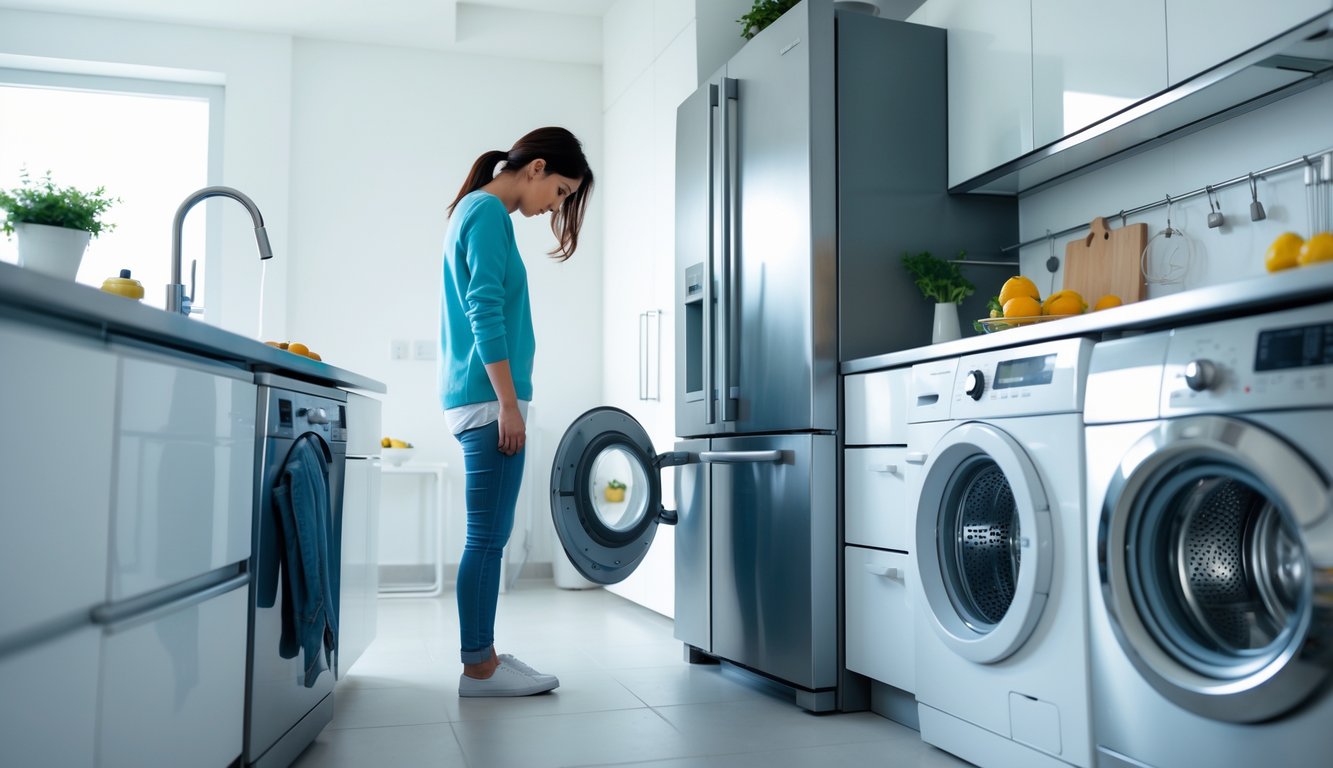
Appliance Manufacturers and Planned Obsolescence
Everyone points fingers at appliance brands for “planned obsolescence.” Sometimes I buy it, sometimes I don’t. Depends on the day. I mean, warranties are shrinking, and every brand brags about “eco savings” while my fancy washer is already spitting out error codes at year seven. Energy Star, sure, but that doesn’t stop the breakdowns. And design choices? Marketing? It’s all a mess—don’t ask me to explain the logic.
The Truth About Planned Obsolescence
No one in the industry ever flat-out says, “Yep, we make these to break quicker.” But get this: washing machines used to last 19 years; now it’s under 11 (2023 survey—looked it up three times because, honestly, it sounds fake). Is it a conspiracy? Maybe. Or maybe it’s just business. Cheap parts everywhere—even “premium” stuff. I’ve seen $2 relays where a $20 one used to go, and plastic gears instead of steel. Then my dryer’s panel dies at year eight. I’ve asked “experts” if this is on purpose—they just shrug and talk about “new standards.” Sure. But if you poke around in manufacturer docs, there’s zero push to make things last decades. What is this, 1976?
How Design Choices Affect Durability
Design matters, but not in the ways you hope. I’ve seen a door hinge rust out just because someone cheaped out on a seal. My neighbor’s high-end induction cooktop? Dead at six years. Why? Screws, adhesives, circuit boards—just pick a weak link. “Premium” branding mostly means a shiny interface, not better guts. Raw material costs go up, so corners get cut. “Modular” fridge compressors? Now they’re soldered shut, so forget repairs. If you look at stats for washers, ovens, fridges—there’s this slow, sneaky shift toward stuff you can’t fix. Assembly lines love it, repair techs don’t. I’m tired of hearing about “robust testing protocols” when what I see is a bunch of models that change so fast, hunting down a replacement part feels like a side quest. At this point, durability is luck.
Repair vs. Replace: Making Economical Choices
People love to say appliances don’t last, but no one wants to admit running quick-wash all the time ruins your washer. The “economical” choice? It’s not as simple as it sounds. Repairs get expensive fast, parts vanish, and the guy at the counter just shrugs when you ask for a heating element.
Understanding Right to Repair
You’d think fixing your stuff would be easy. Nope. Companies—Whirlpool, GE, whoever—use weird screws and hide manuals like they’re nuclear codes. “Right to repair” laws are supposed to help (Minnesota 2023, France’s repairability index, etc.), but honestly? I tried to order a $28 dishwasher pump. Three weeks’ wait, and the tech muttered about “software-locked” parts. Ever call manufacturer support? Good luck. It’s all robots and dead ends. Finding the right diagram is a scavenger hunt unless you’re already deep in Reddit. So, “right to repair” mostly means I do all the work, and the company still charges double for parts.
When Appliance Repair Is Worthwhile
Everyone throws around the “50% rule”—if the repair is half the cost of a new one, just replace it. My neighbor got quoted $600 for a fridge compressor. New fridge? $1,100. Here, just look at this:
| Appliance | Avg. Lifespan (years) | Repair Cost | New Replacement | Worth Repairing? |
|---|---|---|---|---|
| Refrigerator | 10–13 | $600 | $1,100 | No |
| Microwave | 9–10 | $150 | $220 | Maybe/Yes |
| Dishwasher | 10–12 | $350 | $800 | Depends on age |
Parts for older stuff? Forget it. Even basic things like gaskets just disappear. Fixing a ten-year-old washer usually means chasing down weird old stock. Plus, repairs after a certain age barely add any time—Consumer Reports (2024) says 65% of people just replace after two big breakdowns. Can’t blame them.
The Environmental Toll of Early Appliance Failure
If I see another busted washing machine drum or fried circuit board, I’m going to need hazard pay. Most folks never see the landfill side of things—the way one dead fridge means another compressor in the dump, or how every “upgrade” pushes last year’s model into the e-waste pile. Ten years and out? That’s a lot of trash nobody talks about.
Risks of Growing Electronic Waste
Ever been to an e-waste drive? The smell alone will haunt you. You pay your $40 fee, maybe feel a little better, but Europe still tossed over 10 million tonnes of e-waste last year (Eurostat 2023), and home appliances are a big chunk of that. Suddenly, your “green” microwave looks a little less heroic.
| Appliance Type | Average Lifespan (years) | E-Waste Share (%) |
|---|---|---|
| Washing Machines | 10–11 | 23 |
| Refrigerators | 13–15 | 18 |
| Ovens | 13–14 | 11 |
| Dishwashers | 12–15 | 16 |
Nobody thinks about rare earth metals in the boards or how most of this junk never gets recycled. And don’t get me started on the sketchy “export for recycling” schemes. Out of sight, out of mind, right?
Long-Term Environmental Impact
When a $950 dryer dies at year nine, it’s not just annoying—it’s a whole chain of wasted energy, metal, plastic, you name it. I skimmed a 2024 EU briefing that basically says, “shorter lifespans, bigger environmental mess.” But try finding that on a product label. All you see is “eco” this, “green” that. Meanwhile, the real impact is buried. More devices, more power plants, more rare metals—maintenance gets worse every year. Nobody headlines this stuff, but I can’t get over how fast we’re burning through resources for the sake of “upgrades.”
Oh, and I once saw a kid use a broken blender as a succulent planter. Cute, but the mercury switch and circuit board toxins are still in there. When’s the last time an energy label mentioned that? Never. So, even if your new gadget sips less power, the real environmental cost just hangs around.